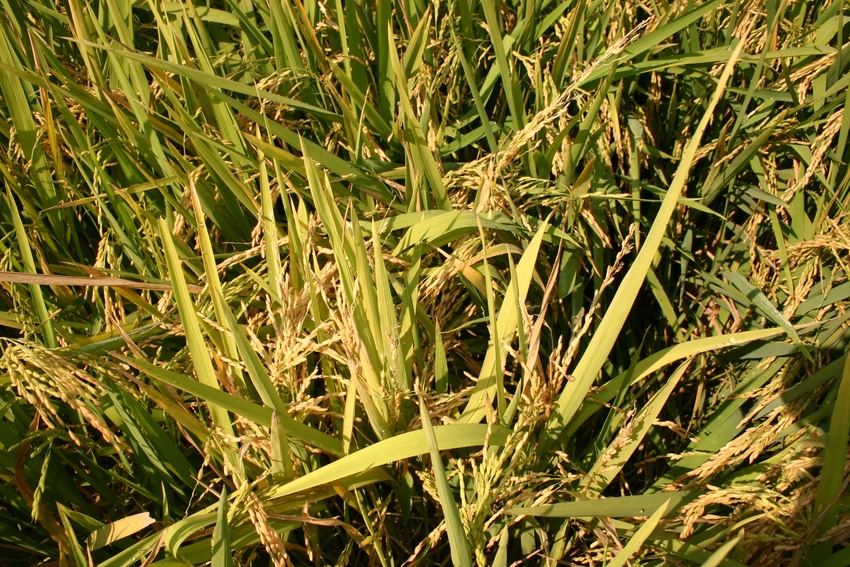
How can producers begin to use cover crops in rice rotations?
Trent Roberts, soil fertility specialist with the University of Arkansas, has some ideas.
“We’ve looked at soybeans going into rice or coming out of rice and going into soybeans,” says Roberts. “With rice in the system it really adds another level of challenges to deal with.
“I believe that’s a large part of the reason cover crop adoption in Arkansas has been limited up until now. Rice is grown in a lot of our production systems and that hinders the use of cover crops.”
Roberts and colleagues are well aware of the difficulties producers face. “But if we can get cover crops to work with rice in the rotation then we can make them work anywhere. If you can make cover crops work with rice, any other rotation should be a piece of cake.”
Timing
The primary limitation with rice and cover crops is the timing of the cash crop harvest. “If you look, our optimum planting window for cover crops in most of Arkansas is from around September 15 to October 15. Well, that usually means more than half the soybeans are still in the field. Plus, 40 to 50 percent of the rice is in the field during that time frame.
“If you’re harvesting rice on October 1, that doesn’t give you much time to come back and get the stubble and residue taken care of followed by planting a cover crop before it gets too cold.”
Among the main things researchers are focusing on with the project “are novel ways to get the cover crop established in such a short time. When following rice, we’re actually looking at how well we can no-till cover crops into rice residue.”
Among the best approaches they’ve found is, following rice harvest, “rolling the stubble down and planting the cover crops no-till into the residue. It’s surprising how well that’s worked. That eliminates the need to burn or plow to get rid of the residue. But it lets you get the cover crop in without a lot of extra work.”
The project is being funded through an NRCS Conservation Innovation grant. “The idea behind that grant is the NRCS provides money to researchers to demonstrate new conservation technologies.
“The past three or four years, we’ve done a lot of small-plot work at research stations around the state. For the past two winters, we’ve also done research with on-farm demonstrations.
“We’ve tried to find producers interested in cover crops but didn’t have the technical advice they needed. Cooperators are in Lawrence County, Jackson County, Arkansas County and Jefferson County.
“When we talk with rice producers, the most common question regards species selection. ‘What in the world can I plant following rice that’ll grow?’ We’ve looked at that extensively and cereal rye, Austrian winter pea and black oats all tend to do well after rice. Austrian winter field pea is one of my favorites to work with because it tends to do fairly well in saturated soils or soils that will be fairly wet for the winter.”
Geese
One of the big problems has turned out to be pressure from migrating geese. “Think about the areas we’re trying to the research – geese like to hang out there, it’s in the flyway. They certainly have an affinity for Austrian winter pea. Now, some growers don’t think that’s all together a negative because the birds may be eating the peas and leaving the winter wheat alone.
“One thing we’ve found is if we blend black oats with winter pea the geese are less prone to eat. For some reason they just don’t like black oats.”
As for insects or disease pressures from working with cover crops, “we haven’t seen anything. There are potential issues that could arise but we haven’t seen any of that. We’re trying to follow Best Management Practices – burn down three to four weeks before planting rice to help prevent any of those issues.
“Sometime in March, before cooperators begin to apply burndown herbicides, we want to have tours of the demonstration fields. Anyone interested should watch for dates on that. Producers can attend and learn how this works in a real-world environment.”
The demonstrations have been purposely spread out in different soils, different production systems and using different equipment. “A producer may say ‘I only have X type of planter. Can I use that?’ Chances are, we have a cooperator who’s already tried it. One of the biggest tools we have in implementing cover crops is folks who’ve already tried them.”
About the Author(s)
You May Also Like




